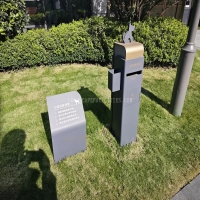Welcome to the website for landscape facilities products and knowledge.
How does the table’s stability perform on uneven terrain?
When setting up outdoor activities on rough ground, table stability becomes crucial for both safety and convenience. Modern engineering has developed multiple solutions to address this challenge effectively.
The core of uneven terrain stability lies in advanced leg adjustment systems. Many contemporary tables feature independent leg levelers that can be extended or retracted individually. This allows users to compensate for slopes up to 15 degrees while maintaining full table functionality. The mechanism typically involves twist-lock systems or push-button adjustments that require minimal effort to operate.
Material selection plays an equally important role in maintaining stability. High-density aluminum alloys provide structural integrity without excessive weight, while rubberized foot pads create substantial friction with various surfaces. These pads often incorporate self-leveling technology that automatically conforms to ground contours, distributing weight evenly across all contact points.
Design innovations significantly contribute to stability performance. Cross-bracing between legs creates triangular support structures that resist lateral movement. Some manufacturers incorporate pendulum-style suspension systems that keep tabletops level even when legs encounter significant elevation changes. These systems work particularly well on surfaces like gravel, sand, or grassy slopes where traditional tables would wobble.
The table's center of gravity management deserves special attention. Engineers calculate optimal weight distribution to prevent tipping, often positioning heavier components toward the base. This design philosophy allows tables to remain stable even when loaded with heavy items on inclined surfaces. Many models feature widened stance configurations that increase the footprint without substantially increasing packed size.
Testing protocols for terrain stability involve rigorous simulations. Manufacturers subject prototypes to various challenging conditions including rocky trails, beach sand, and forest floors. The most reliable tables demonstrate consistent performance across these environments, maintaining their structural integrity through thousands of adjustment cycles and weather exposures.
For users requiring maximum adaptability, some advanced models incorporate smart stabilization technology. These systems use pressure sensors and micro-adjustments to automatically compensate for minor shifts in terrain. While primarily found in high-end professional equipment, this technology represents the cutting edge of portable table stability solutions.
Proper setup technique enhances any table's inherent stability characteristics. Users should always start from the highest ground point when adjusting legs, working downward to achieve level positioning. Regularly checking locking mechanisms ensures maintained security throughout use, while periodic cleaning of adjustment components prevents jamming or slippage.
The evolution of table stability technology continues to address increasingly challenging environments. From camping trips to outdoor events, modern stabilization systems ensure that uneven terrain no longer compromises dining or work surfaces. These innovations transform previously unusable spaces into functional areas for various activities.
Related search:

Recommendation
Outdoor cat and dog feces trash can; Community pet trash can; Metal multi-color design